Prik Khing Thai curry paste is derived from the popular Thai red curry paste with fewer ingredients. It is a drier curry paste used for the popular Thai stir-fried Pad Prik Khing recipes, a dish full of bold and exciting flavors from the use of kaffir lime leaves. So delicious and healthy!
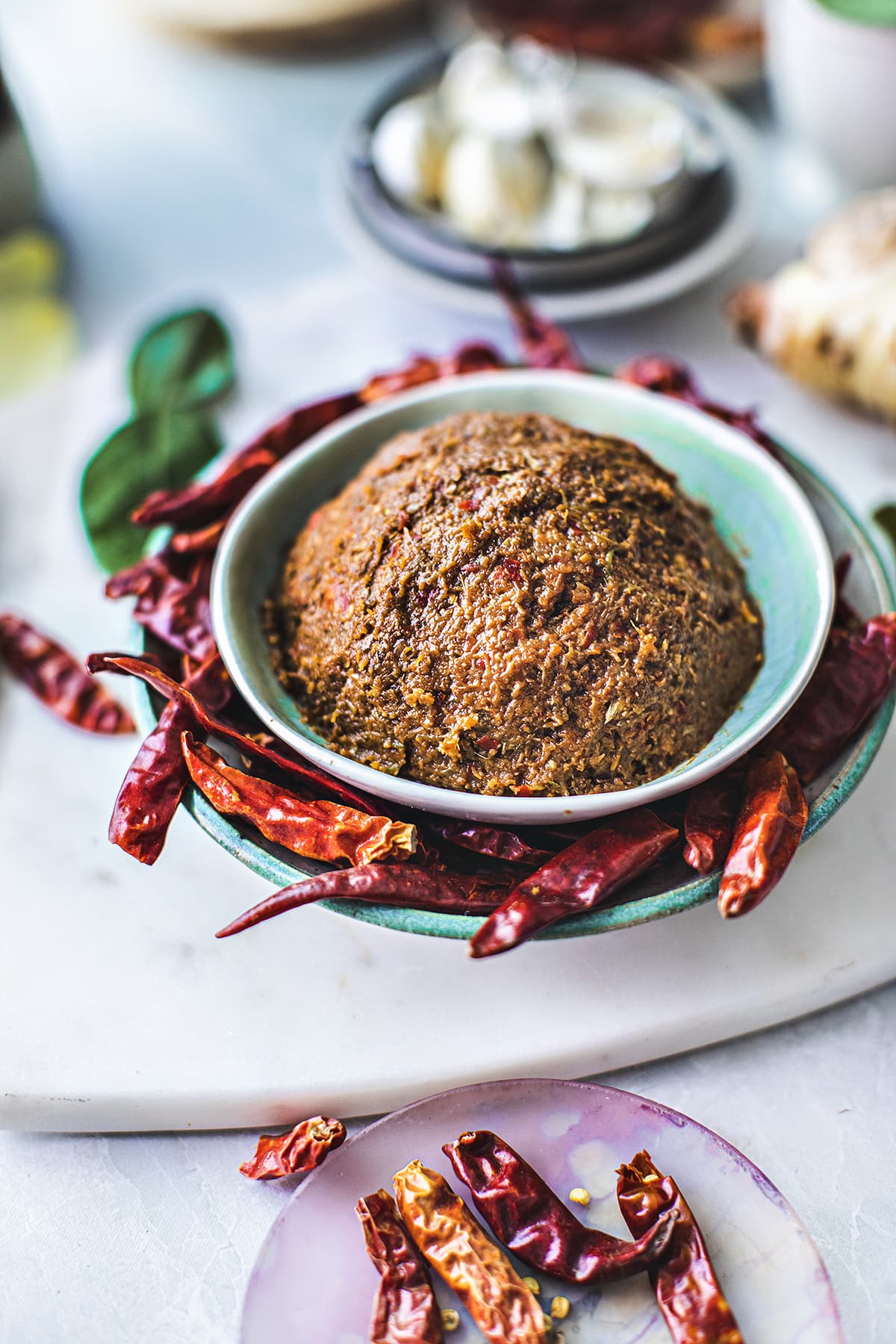
After making this paste, you have two delicious Pad Prik Khing recipes you can use the paste for. Try these wildly popular Thai curries from my blog; Easy red curry green beans with shrimp and Pad Prik Khing recipe with pork belly. So very tasty!
Let's have a little Thai lesson before we get started. Prik in Thai means chilis, and Khing means ginger. Don't be fooled, though. There's no GINGER in Prik Khing curry paste, and please don't use ginger as a substitute for galangal. (:
Jump to:
- What Is Prik Khing Curry Paste?
- Why Homemade Prik Khing Curry Paste?
- More homemade Thai curry pastes to try
- Ingredients for Making Authentic Prik Khing Curry Paste
- Recommended Thai chilies for making red curry pastes
- How to Make Authentic Prik Khing Curry Paste?
- Helpful kitchen notes for success
- Tools Needed for Making Homemade Thai Red Curry Paste
- More homemade curry pastes you might enjoy
- Variations
- Storage
- A shortcut
- FAQs
- More of readers favourite Thai dishes
- Prik Khing Curry Paste
What Is Prik Khing Curry Paste?
The Prik Khing curry paste has ingredients similar to the Thai red curry paste. It has the foundational Thai curry paste key ingredients like lemongrass, galangal, shallot, garlic, shrimp paste, and dried long chilis, but no cumin or coriander seeds are used. This Prik Khing paste also uses kaffir lime leaves since most Prik Khing stir-fried recipes call for this fragrant herb. The recipe is not the same without the leaves. Please don't skip it. (:
It's also very similar to the Thai Kaeng Kua curry paste, another red curry paste (with spicy flavors!) This one has more fresh ingredients like kaffir lime leaves to add a unique flavor to this specific paste. Prik Khing is often a dry curry paste to make delicious Thai curries.
Pad Prik Khing stir-fries are some of my favorite curries because it is easy, but the distinct flavor of the kaffir lime leaves brings this dish to life!
Why Homemade Prik Khing Curry Paste?
- Prik Khing curry paste is very healthy from the fresh herbs used to make the paste. It tastes more fresh than the store-bought curry paste.
- You can control heat and saltiness levels when making homemade curry pastes!
- Prik Khing curry paste is one of the more simple curries pastes you can make at home
- You can freeze your prik khing curry paste for up to 4 months.
- The paste can be used for my popular Easy Chinese long beans with shrimp and the Pad Prik Khing pork belly recipe.
- Most, if not all, of the ingredients for the paste can be found at your local Asian market!
More homemade Thai curry pastes to try
- The best authentic massaman curry paste
- Authentic Thai yellow curry paste
- Authentic green curry paste
- Authentic red curry paste
- Authentic Prik Khing curry paste
- Authentic Choo Chee curry paste
- Tom Yum curry paste
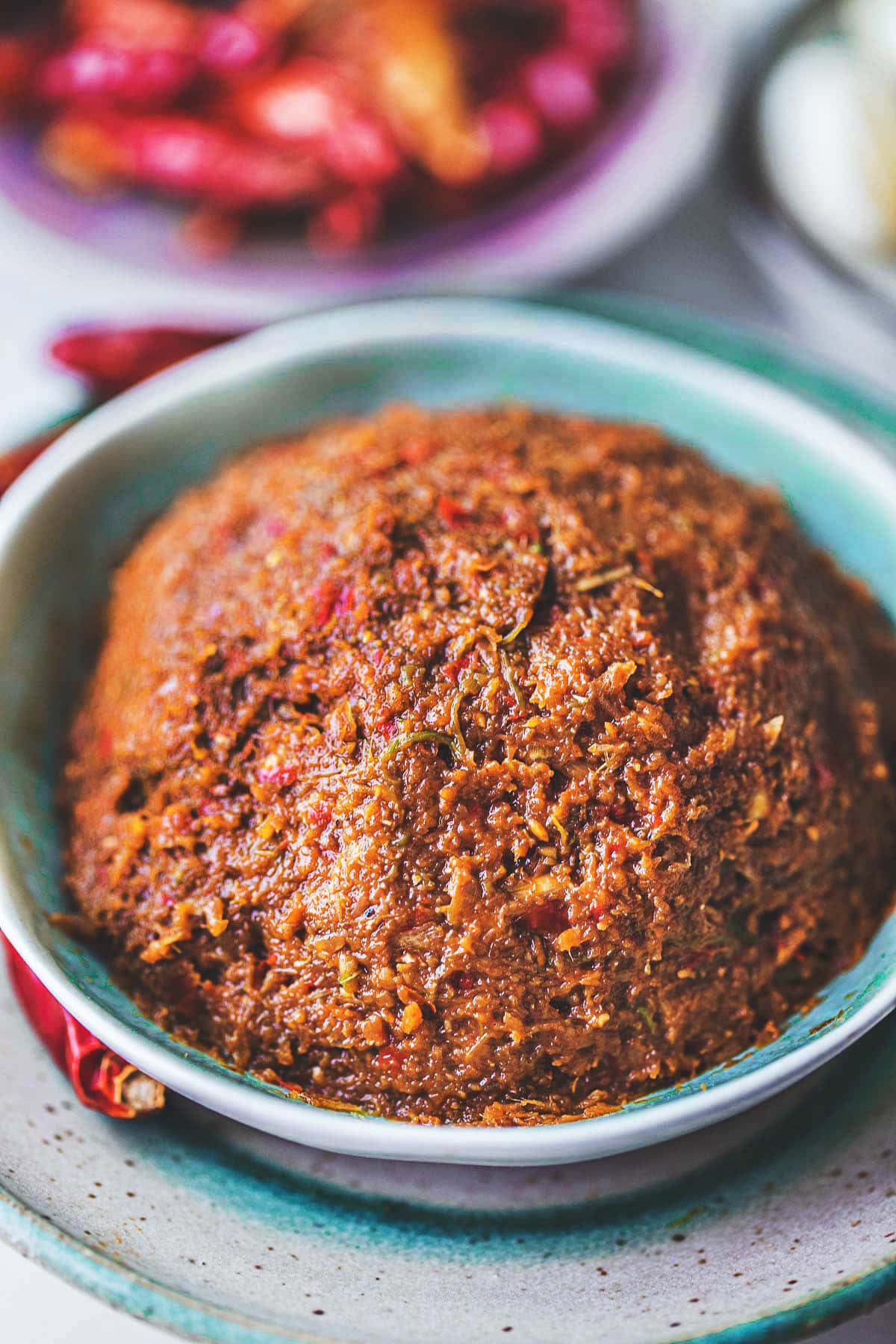
Ingredients for Making Authentic Prik Khing Curry Paste
Below are the main ingredients to make authentic Prik Khing homemade curry paste. Find fresh or frozen items as best you can, but avoid dried or powdered forms when making most Thai curry pastes.
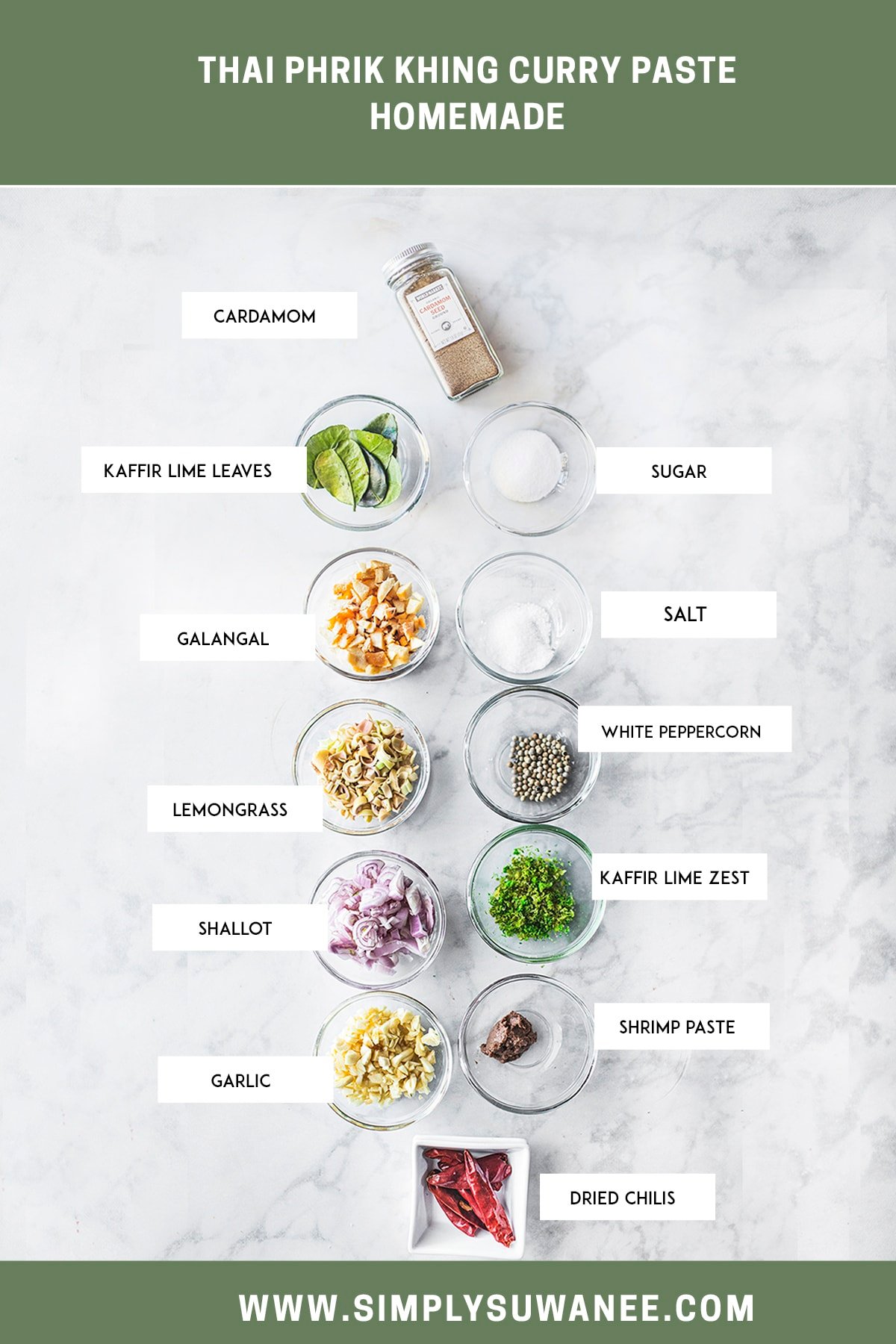
- Dried chile peppers. Use dried Thai chilies if possible. Fresh Thai chile works too but dried is preferred as it is not as spicy as the fresh chile pepper. Some chilies that are good for making your red curry pastes are Serranos and Spur chilies. See notes below on Chiles recommended for making Thai red curry pastes.
- Lemongrass. Use fresh lemongrass if possible, and only use the rounded 3-5 inches part of the stem. Make sure to chop your lemongrass stalk into fine pieces before pounding to help speed up the paste-making. Use frozen lemongrass if fresh ones are not available to you. Read more about Lemongrass and how to use it in Thai cuisine.
- Galangal. Use fresh or frozen galangal only for Thai curry paste recipes. Never use dried or powdered galangal. Also, never substitute ginger for galangal. They are two completely different ingredients with very different flavors and fragrances. Most, if not all, Asian markets will have fresh or frozen galangal. Read more about Galangal in Thai cooking here.
- White peppercorns. Use whole peppercorns instead of powder for an intense flavor added to your curry paste.
- Kaffir lime zest. Kaffir limes are difficult to find in the US. If you can't find them, use organic lime zest plus 3-4 Kaffir lime leaves. Key limes are great for making curry pastes if you can find them. Read more about Kaffir limes and leaves and substitute here.
- Kaffir lime leaves. Kaffir lime leaves are available in most Asian markets. They are usually found in the freezer section. They are also called Makrut lime leaves.
- Shallot. Shallots make up a majority of most Thai curry pastes. I don't recommend substituting them with purple onions.
- Cilantro roots or stems. Cilantro with roots is sold throughout markets in Thailand. They are rare in the US, but the next best option is the stems. The largest and lowest part of the stems works great.
- Shrimp paste. Thai shrimp paste is a must if you want authentic Thai curry paste. The pungent smell can be hard to get used to. Ignore this part and know it will elevate your curry paste.
- Cardamom. Use ground cardamom or use allspice instead as a substitute.
Recommended Thai chilies for making red curry pastes
These chilies can be used to make Thai red curry pastes. Each type has a different level of spiciness. Check the Scoville score for the level of spiciness.
The spicy ones are Thai bird’s eye chilis, Piri Piri chilis, Thai long chilis (Prik Chee Fah), De Arbol, or dried Serrano chilis. The large chilis are usually less spicy and are great for use as a natural red color to add to the paste. These are great options, dried California/Anaheim chilis or Gualillo. This dried chilis set combines spicy and mild dried chilis, a good option if you love making your red curry paste from scratch.
How to Make Authentic Prik Khing Curry Paste?
I will show you how to make curry paste in two ways! One is the traditional way of using a stone mortar and pestle to manually pound all the ingredients into a paste. The manual pounding of curry pastes produces stronger flavors from the oils released from the ingredients. The second is super fast and easy! Use a small food processor or blender to mix all the ingredients until smooth paste forms. That's it!
Method 1. Using a Mortar and Pestle
Step 1. Remove the seeds from the chilis, then soak in warm water for 15-20 minutes or until soft. Cut the large chilis into smaller 1-inch chunks before soaking.
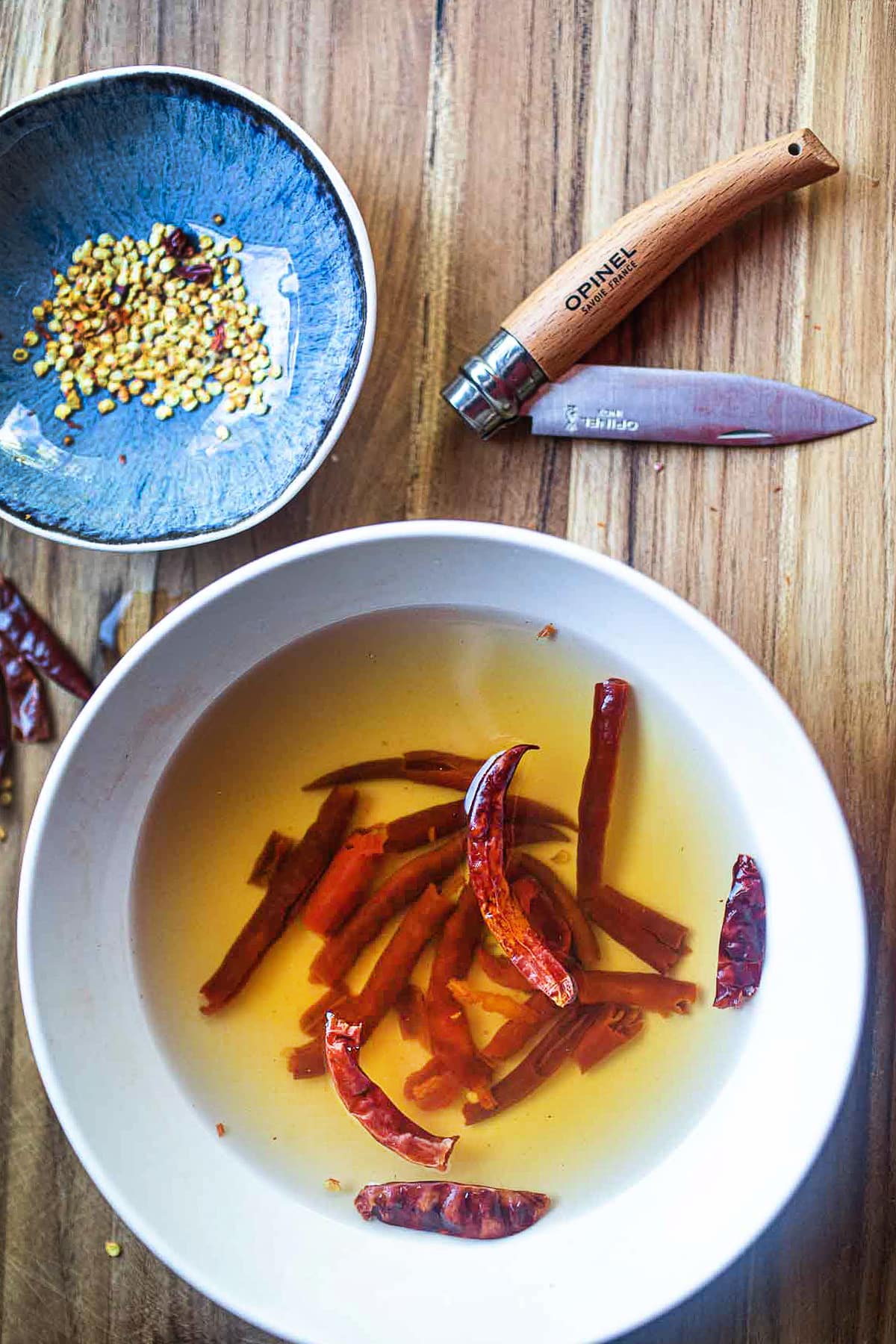
Step 2. Drain, rinse, and pat dry the chilis. Use kitchen scissors to cut the soaked chilis into 1-inch pieces and place them in the mortar. Add the salt and pound together in a mortar and pestle until you form a nice paste.
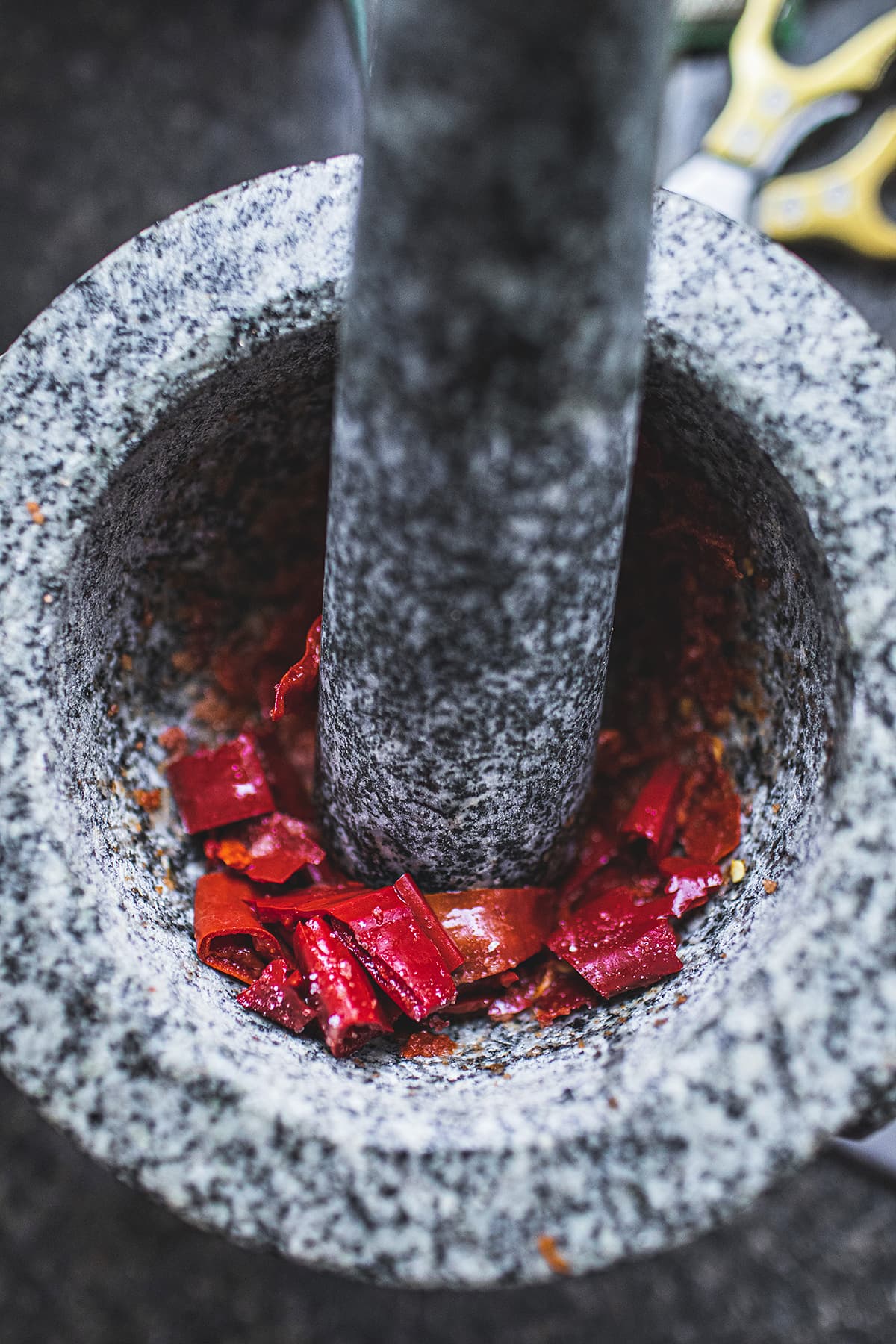
Step 3. Add the lemongrass and galangal and pound into the paste until smooth.
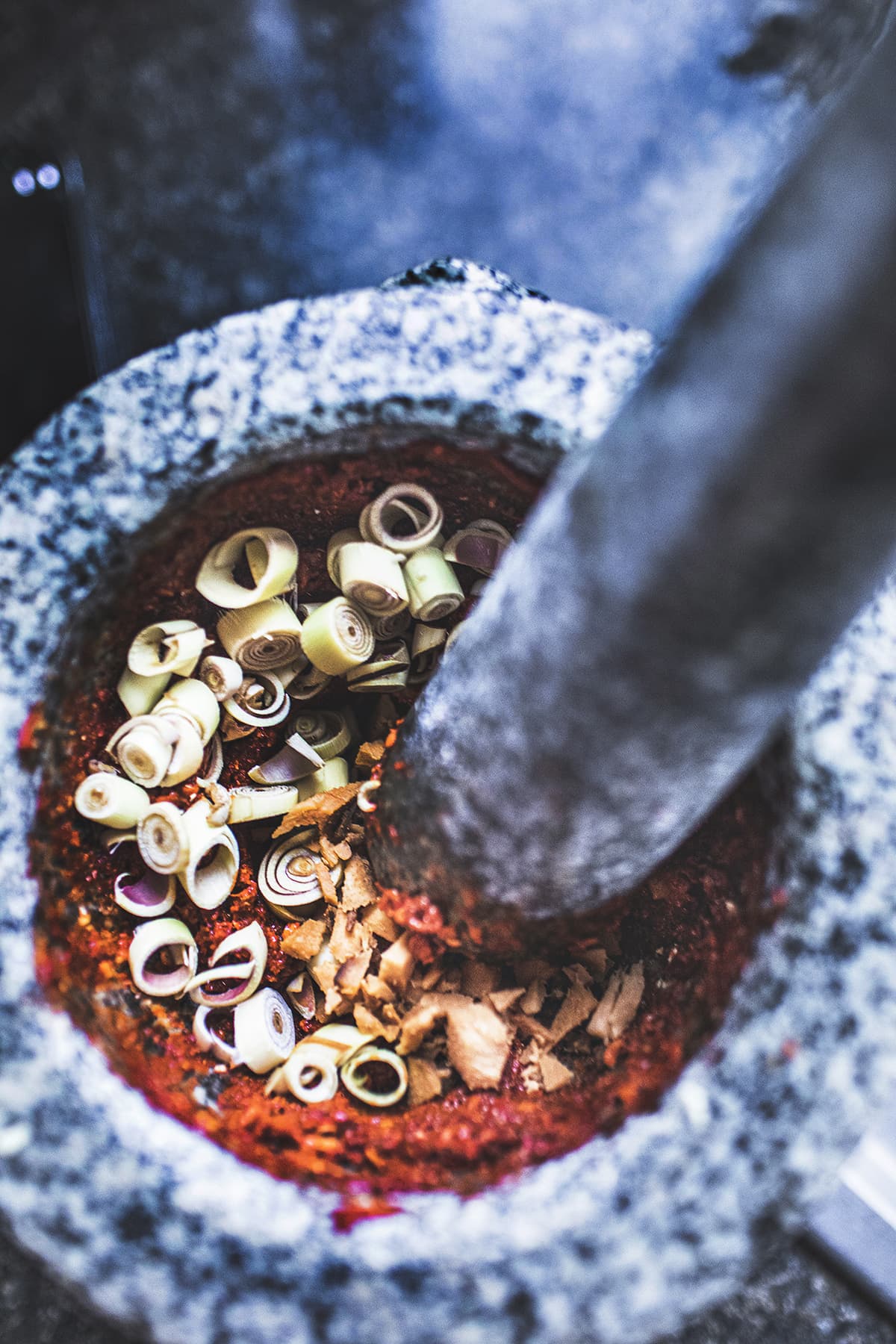
Step 4. Add the garlic, shallot, kaffir zest, kaffir lime leaves, and keep pound away!
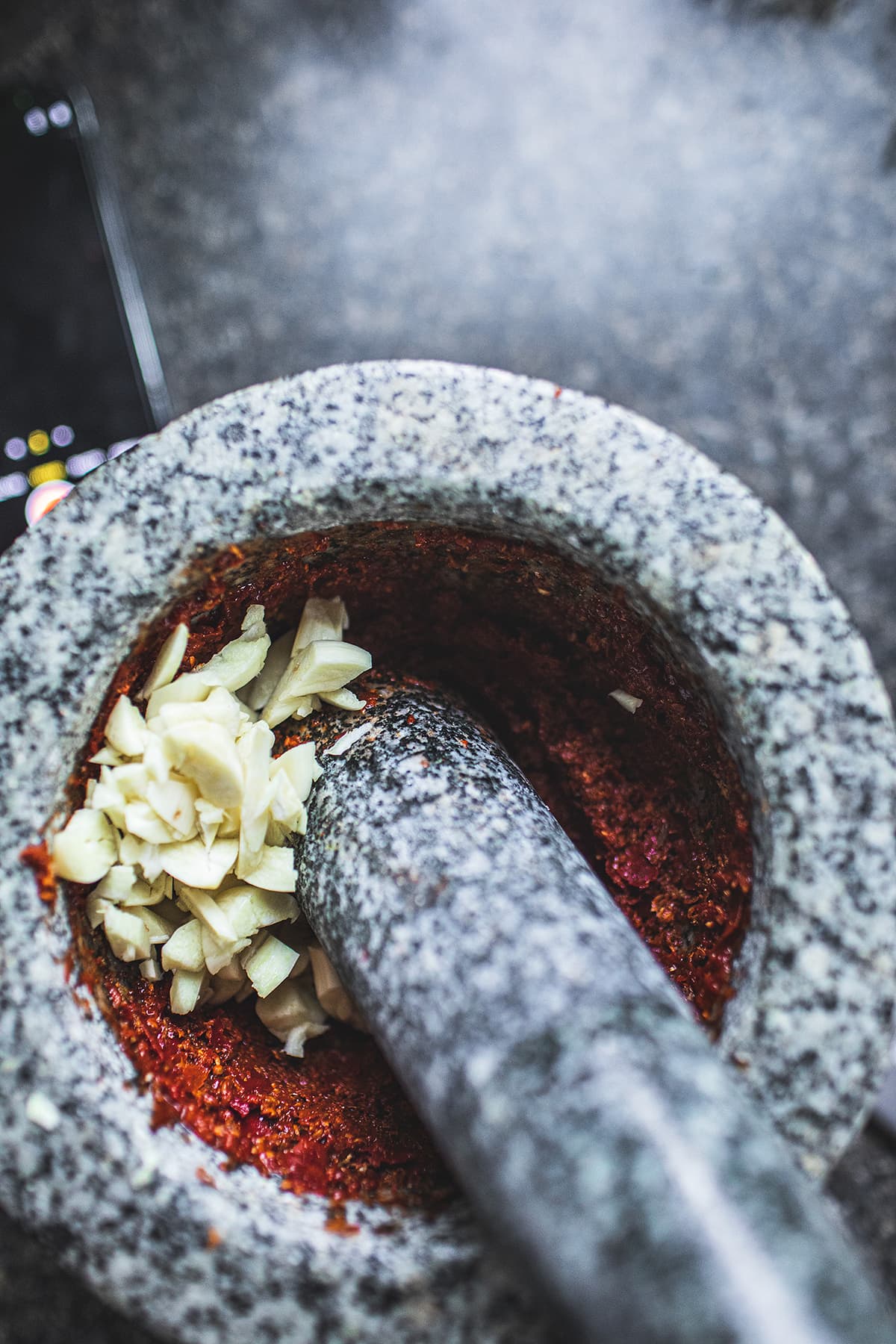
Step 5. Add the ground white pepper, sugar, cardamom, and shrimp paste. Pound everything well until nice paste forms. Remove the paste and use it immediately for a curry. Refrigerate for up to 10 days. Freeze the extra paste for up to 4 months.
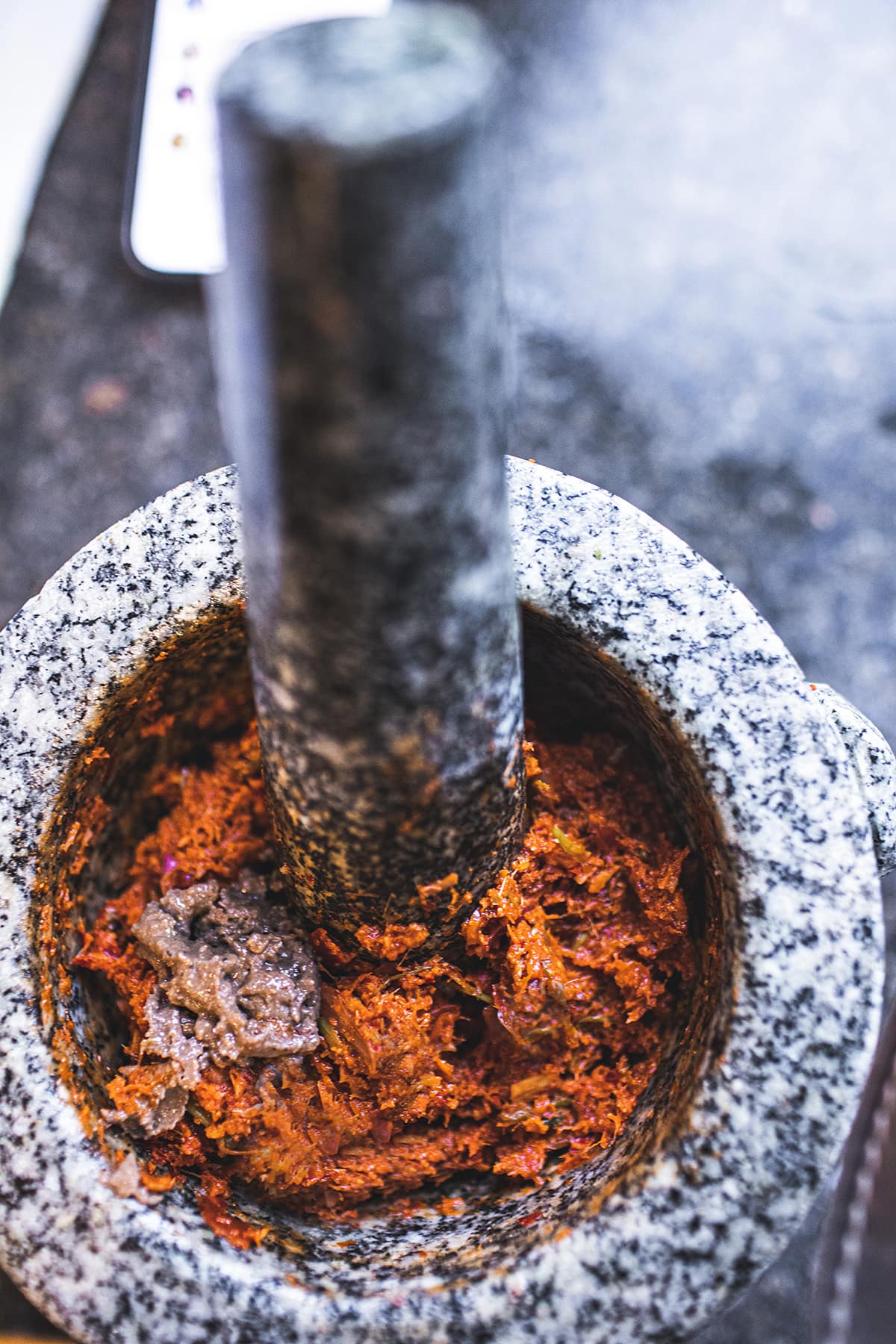
Method 2. Using a Small Food Processor
- Remove the seeds from the chilis, then soak them in warm water for 15-20 minutes or until soft. Drain, rinse, and pat dry the chilis. Cut the large chilis into smaller 1-inch chunks before grinding.

- Add the rest of the ingredients to the food processor and pulverize all ingredients together into a fine paste. Add up to 1 tablespoon of cold water to help turn the blades. A spice grinder works great too! (pictured below). Remove the curry paste for use and store any unused paste in a glass jar. That's it! You just made your curry paste from scratch!
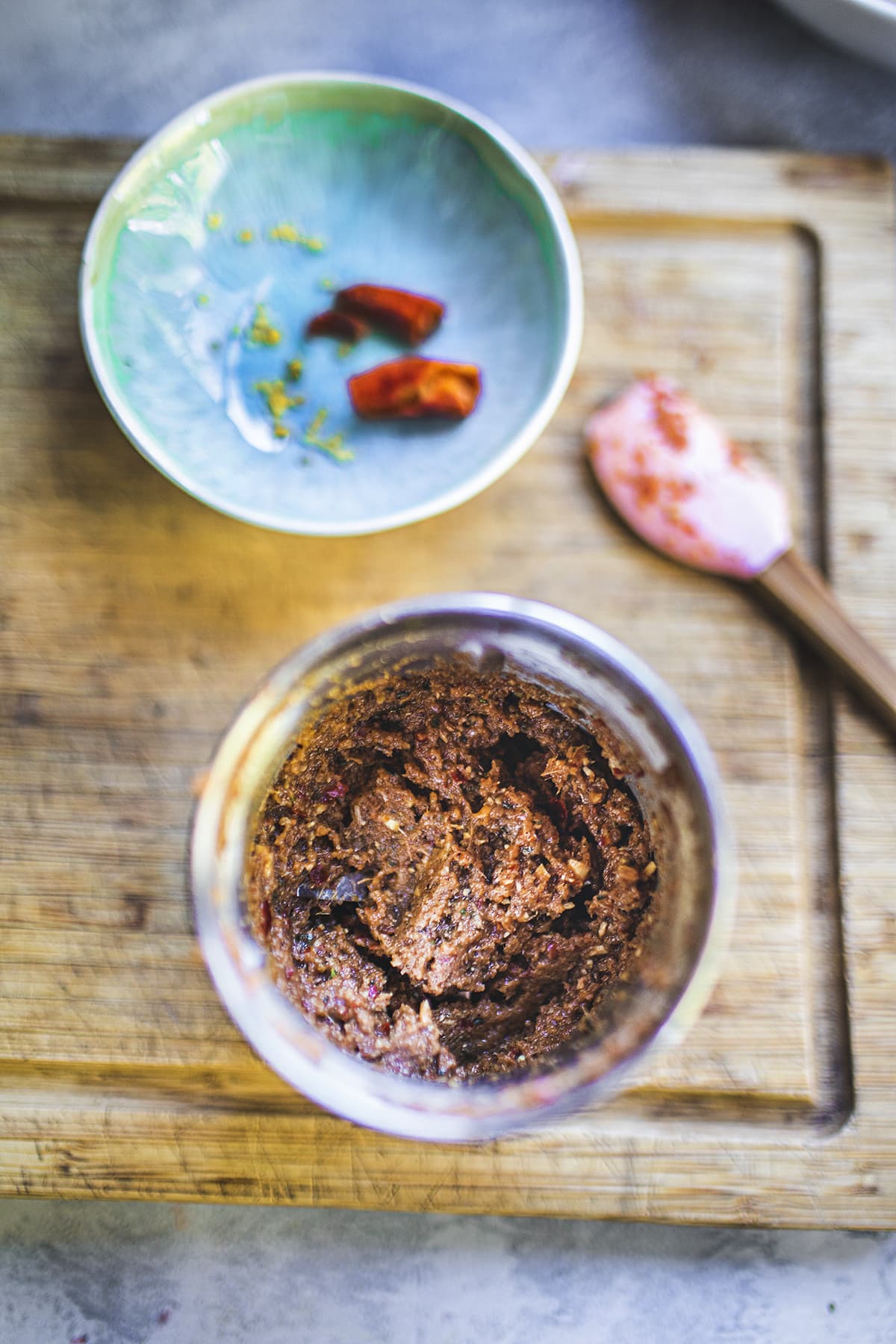
Helpful kitchen notes for success
- You can adjust the spiciness of your curry paste by the number of chilis used. The more you use, the spicier your paste will be. The smaller the chilis, also the spicer your paste will be. Adjust according to your taste buds!
- Always remove the seeds of the dried chilis, with a small knife, before soaking to help reduce the heat of your paste.
- This is VERY important: Use kitchen gloves when handling smaller chilis like Thai bird eye chilis, especially when deseeding them. The oil of the chili seeds is extremely hot and can burn your skin for hours.
- If you are short on time or if you forget to soak the dried chilis, place them in a bowl with water to cover all the chilis. Microwave the bowl for 2-3 minutes, then carefully remove it and let it sit until you are ready to use the peppers.
- For added flavors and fragrance, dry roast the shallot, garlic, and chilies in a large skillet on medium-high heat until lightly browned before use!
- Freeze the leftover paste in small portions after making the paste for easy recipe measurements.
Tools Needed for Making Homemade Thai Red Curry Paste
- A solid stone mortar and pestle with at least a 6-inch opening
- Food processor or blender (I LOVE mine!)
- Spice grinder
- Kitchen scissor. These are my favorite kitchen scissor!
- Small glass jars for storing any leftovers.
- Food labeling
A note on the mortar and pestle If you want to purchase a mortar and pestle for your kitchen, find one with at least 6 inches opening at the top. Make sure it's a stone set so the pounding will not damage it.
More homemade curry pastes you might enjoy
- Authentic Thai yellow curry paste
- Authentic green curry paste
- Choo Chee curry paste
- Red Thai curry paste
- Tom Yum paste
Variations
For a vegan or vegetarian version, omit the shrimp paste and add extra salt. Add ½ teaspoon of salt to compensate for the saltiness.
Storage
Your curry paste will last up to 10 days in the refrigerator and the freezer for 3-4 months.
A shortcut
If you are short on time, it's ok to use canned curry pastes! I do it often, as making curry paste takes some planning. My favorite brands are Maeri and Mae Ploy brand.
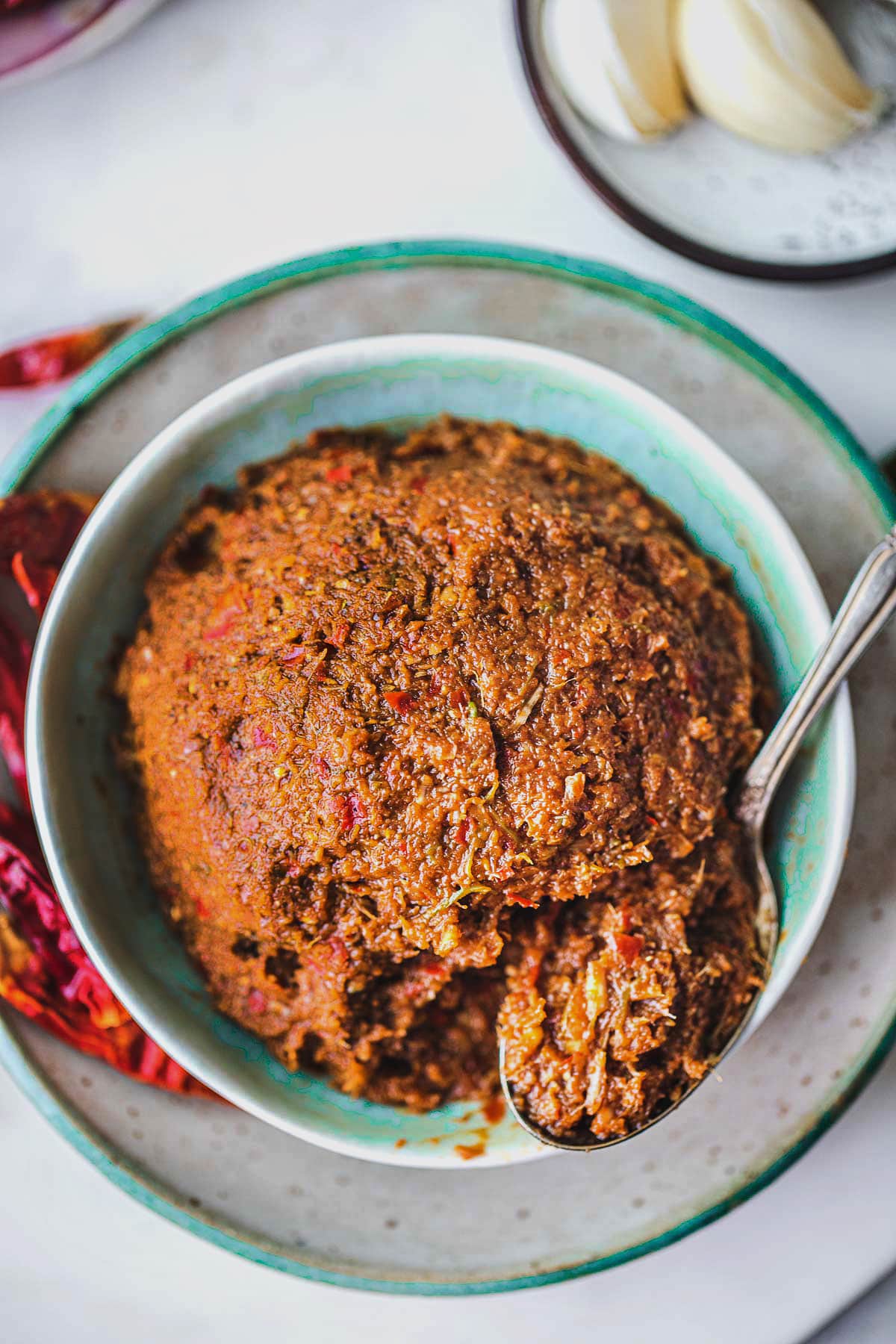
FAQs
No, it's not the same thing. Prik Khing curry paste resembles Thai red curry more than any other paste.
You can make your Prik Khing curry paste as spicy as possible! Homemade curry pastes are great for this reason. You can control the heat of the paste by the amount of chili used.
Prik Khing curry paste tastes like a Thai red curry paste bought in Asian markets. However, your homemade paste will have a stronger taste and smell than store-bought pastes because the ingredients are fresh and bold. The Pad Prik Khing recipe is a lesser-known Thai curry, but it's hard to forget once you've tasted it.
More of readers favourite Thai dishes
- Easy red curry green beans with shrimp, using maesri brand curry paste.
- Pad Prik King recipe with pork belly
- Authentic Thai red curry recipe
- Authentic homemade Thai red curry paste
- Thai curry with chicken and kabocha squash
- Blue mussels, a delicious stir-fry dish with Thai basil
- Tom Kha Gai
- Pad krapao with holy basil
- Tom Yum soup with chicken
** Love a recipe you've tried? Please leave a 5-star ?rating in the recipe card below and/or a review in the comments section further down the page. Or follow me on Facebook, Pinterest, or Instagram! **
Print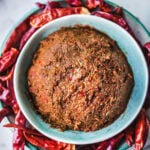
Prik Khing Curry Paste
- Total Time: 25 minutes
- Yield: ½ cup 1x
- Diet: Low Calorie
Description
Prik Khing Thai curry paste is derived from the popular Thai red curry paste with fewer ingredients. It is a drier curry paste used for the popular Thai stir-fried Pad Prik Khing recipes, a dish full of bold and exciting flavors from the use of kaffir lime leaves. So delicious and healthy!
Ingredients
- 4-6 long-dried chilis, deseeded & stems removed (wear gloves when handling hot chilis)
- ½ teaspoon salt
- 2 tablespoons galangal, chopped small
- 2 tablespoons lemongrass, finely chopped
- 1 tablespoon garlic, chopped small
- ⅓ cup shallot, chopped small
- ½ teaspoon kaffir lime zest
- 2 kaffir lime leaves, minced small
- ½ teaspoon ground white peppercorn
- 1 teaspoon sugar
- ½ teaspoon ground cardamom
- 1 ½ teaspoon shrimp paste
Instructions
Using a mortar and pestle
- Remove the seeds from the chilis, then soak in warm water for 15-20 minutes or until soft. Cut the large chilis into smaller 1-inch chunks before soaking.
- Drain, rinse, and pat dry the chilis. Use kitchen scissors to cut the soaked chilis into 1-inch pieces and place them in the mortar. Add the salt and pound together in a mortar and pestle until you form a nice paste.
- Add the lemongrass and galangal and pound into the paste until smooth.
- Add the garlic, shallot, kaffir zest, kaffir lime leaves, and keep pound away!
- Add the ground white pepper, sugar, cardamom, and shrimp paste. Pound everything well until nice paste forms. Remove the paste and use it immediately for a curry. Refrigerate for up to 10 days. Freeze the extra paste for up to 4 months.
Using a Small Food Processor
- Remove the seeds from the chilis, then soak in warm water for 15-20 minutes or until soft. Drain, rinse, and pat dry the chilis. Cut the large chilis into smaller 1-inch chunks before grinding.
- Add the rest of the ingredients to the food processor and pulverize all ingredients together into a fine paste. Add up to 1 tablespoon of cold water to help turn the blades. A spice grinder works great too! Remove the curry paste for use and store any unused paste in a glass jar. That's it! You just made your curry paste from scratch!
Notes
- You can adjust the spiciness of your curry paste by the number of chilis used. The more you use, the spicier your paste will be. The smaller the chilis, also the spicer your paste will be. Adjust according to your taste buds!
- Always remove the seeds of the dried chilis, with a small knife, before soaking to help reduce the heat of your paste.
- This is VERY important: Use kitchen gloves when handling smaller chilis like Thai bird eye chilis, especially when deseeding them. The oil of the chili seeds is extremely hot and can burn your skin for hours.
- If you are short on time or if you forget to soak the dried chilis, place them in a bowl with water to cover all the chilis. Microwave the bowl for 2-3 minutes, then carefully remove it and let it sit until you are ready to use the peppers.
- For added flavors and fragrance, dry roast the shallot, garlic, and chilies in a large skillet on medium-high heat until lightly browned before use!
- Freeze the leftover paste in small portions after making the paste for easy recipe measurements.
** Thank you so much for visiting my blog! This is truly a passion for me. If you have enjoyed these recipes and appreciate the hard work I put into them, I would love it if you would share them with your friends! Your recommendation is the highest review I could hope for, and I’d appreciate it! **
- Prep Time: 15
- Cook Time: 10
- Category: Curries
- Method: food processor
- Cuisine: Thai
Keywords: Prik Khing curry paste. Homemade prik khing curry paste. Prik Khing curry recipe.

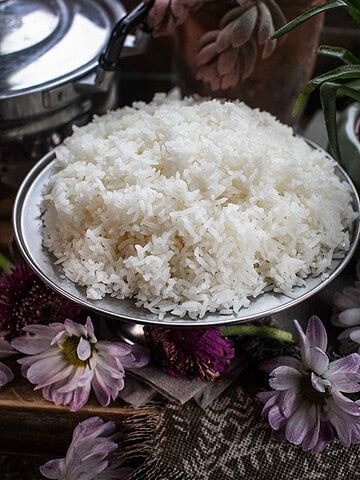
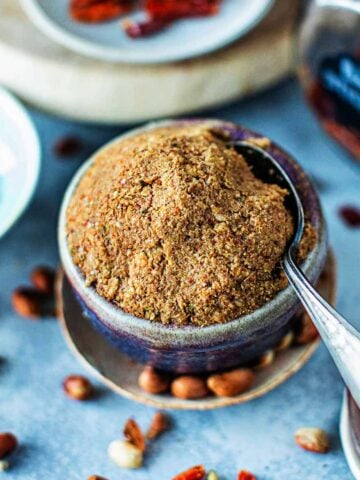
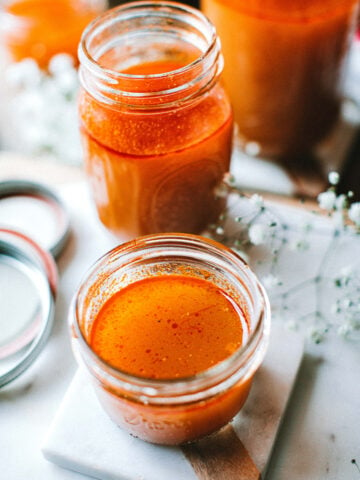
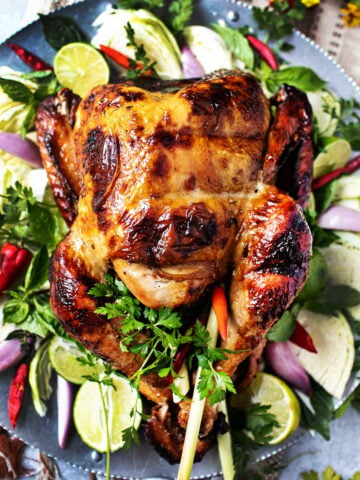
Leave a Reply